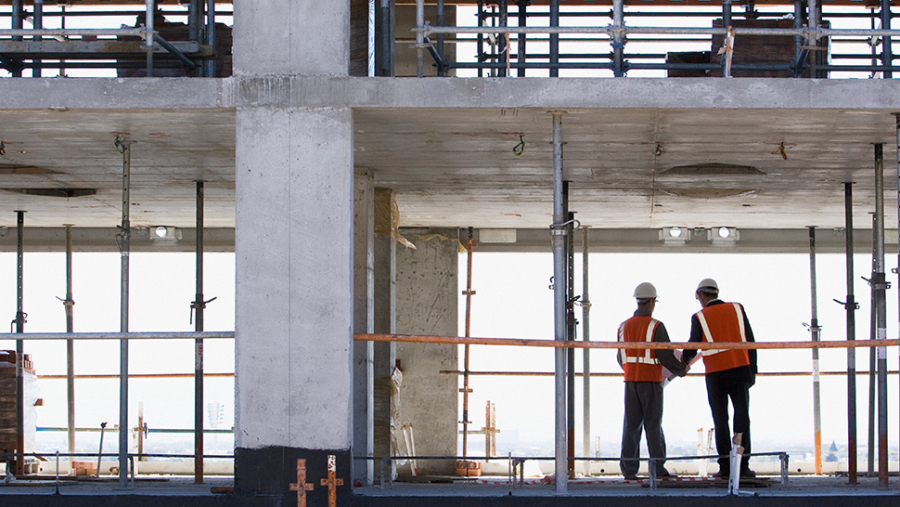

New legislation is being introduced aimed at giving better protection not just to occupants of structures like Grenfell Tower, but also to oversee the safety and performance of all buildings.
The Grenfell Tower tragedy in June 2017 led to the loss of life of 72 occupants of the block of flats in North Kensington. It is well documented that the fire broke out in the building and spread unhindered via the tower’s cladding system. That event led to a series of high-profile public and construction industry inquiries and investigations which determined that the regulatory structure for high rise and complex buildings was not fit for purpose.
The Fire Safety Act 2021 has already been put in place to address fire related risk in buildings and is designed to ensure that we should not see a repeat of Grenfell.
Now, in July 2021, the government has introduced the Building Safety Bill which is intended, within a timetable of 12 to 18 months, to result in a wide ranging new Act, along with associated regulations and reforms to existing laws, aimed at addressing all that has been identified as being wrong with our current building safety laws.
The Bill will result in new powers focussing on the design and construction requirements for high rise buildings, hospitals and care homes of at least 18 metres to ensure that building safety is properly considered and that standards are maintained during construction.
This will be alongside the introduction of a Building Safety Regulator, whose duty will be to oversee the safety and performance of all buildings, including by gathering intelligence to inform better risk management across the built environment. They will work with the construction industry, construction professionals and others involved in building projects.
Together with new enhanced rights of legal redress for those who are affected by inadequately designed and constructed buildings, the goal is to deliver a stronger regulatory system for the development of safer homes and buildings.
Specific measures proposed in the new Bill include:
- The Building Safety Regulator will be established as a new feature of the Health and Safety Executive, with objectives intended to secure the safety of people in and around buildings and to improve construction standards.
- A new more stringent regulatory regime will be introduced for higher risk buildings and to oversee the safety and performance of all forms of construction.
- A construction related duty holder regime is to be incorporated to manage the whole life cycle of higher risk buildings. This is likely to be along with a further update to the existing Construction (Design and Management) Regulations 2015 under which all parties to a construction project have responsibilities in regard to health and safety in the construction of a building and in relation to its later use and maintenance.
- Amendments are proposed to the Building Act 1984 which is the source legislation for the Building Regulations which govern construction standards. Building safety risks will be required to be considered at each stage of a new building and which will include practical details to be considered via three ‘gateways’ which higher risk buildings will need to pass.
- Also in regard to higher risk buildings, there will be a requirement for the appointment of an ‘Accountable Person’ who will register a building with the Building Safety Regulator, before it becomes occupied, appoint a Building Safety Manager and keep occupants up to date in regard to building safety matters.
- The extension of the time limits within which claims can be made relating to work which does not comply with the Building Regulations or the Defective Premises Act 1972. That extension would last up to 15 years and would be retrospective. The Defective Premises Act applies in regard to defects in homes which impact on their suitability for habitation.
- The Building Safety Regulator will have extended powers to prosecute for Building Act offences.
- The competence and accountability of building control professionals is to be improved, along with enhanced monitoring of architects via the Architects’ Registration Board.
- Other provisions include a new system for the management of building and fire safety, and for the regulation of all construction products placed on the UK market, with new civil and criminal penalties for a breach of the new regulations.
Inevitably perhaps, the proposed new building safety legislation has been described as being the most significant to impact on the construction industry for a generation. Certainly, the scale of what is to be covered and the sheer ambition of what is intended means that the construction sector, insurers, and the occupiers of all buildings should see some very significant reforms to the current regulatory regime.
We will be keeping close to developments as the Bill progresses through Parliament and monitoring the planned introduction of this significant new law which will have a major impact on our construction and real estate clients and contacts.










